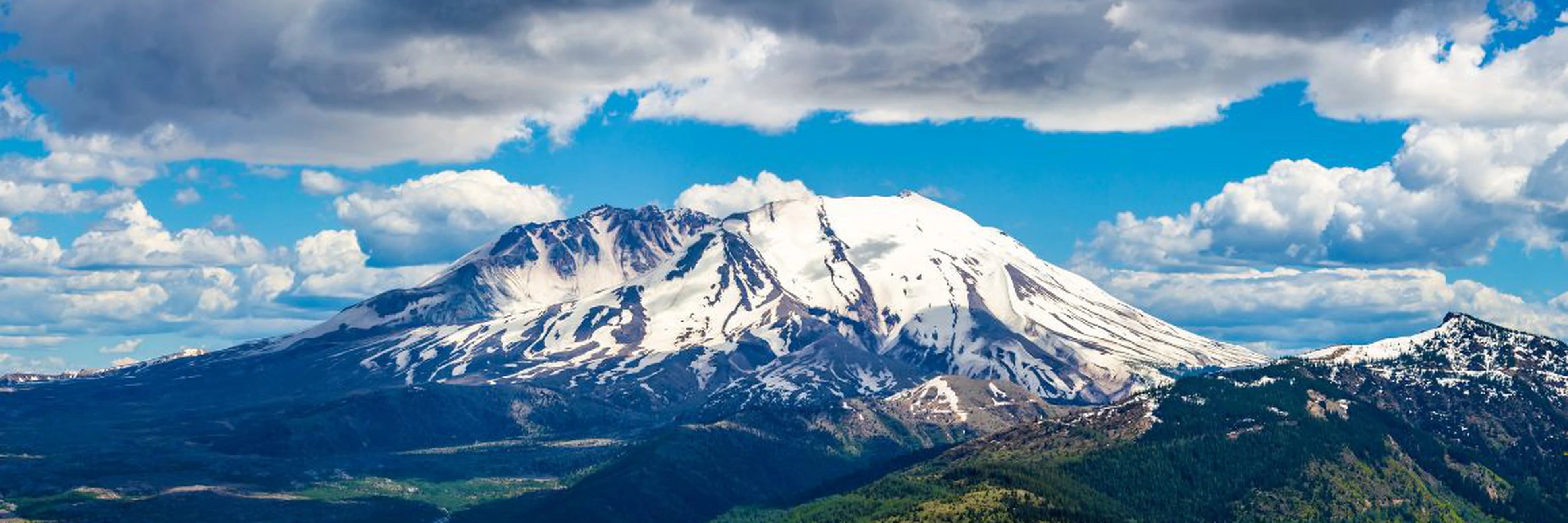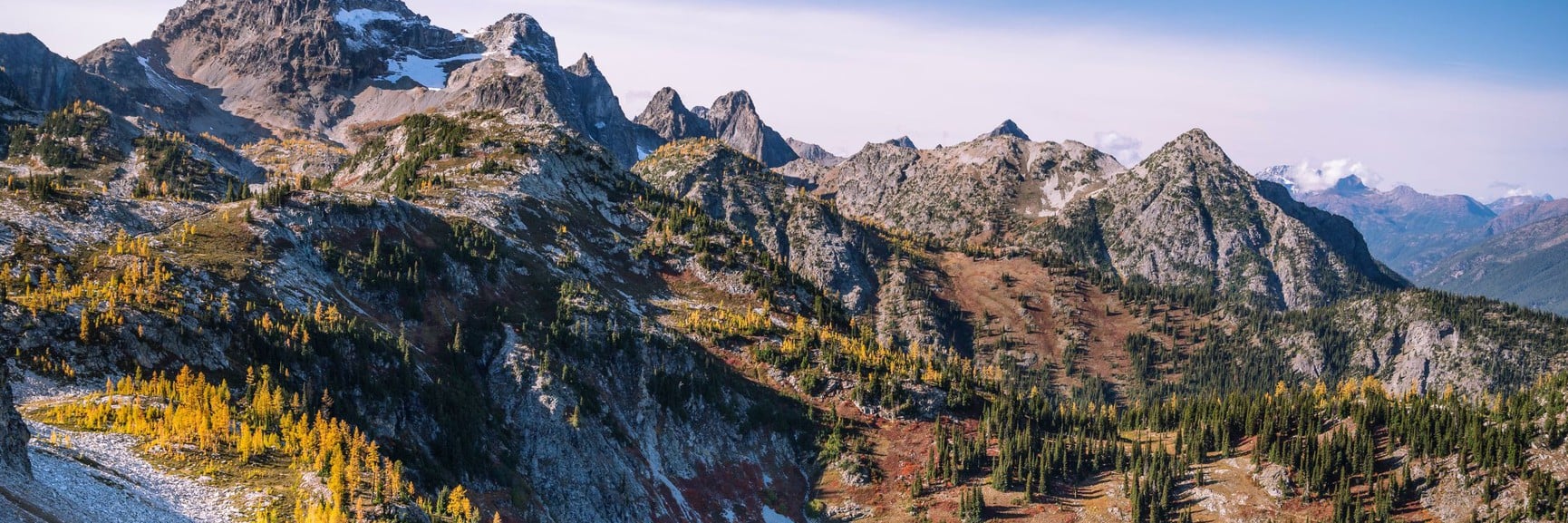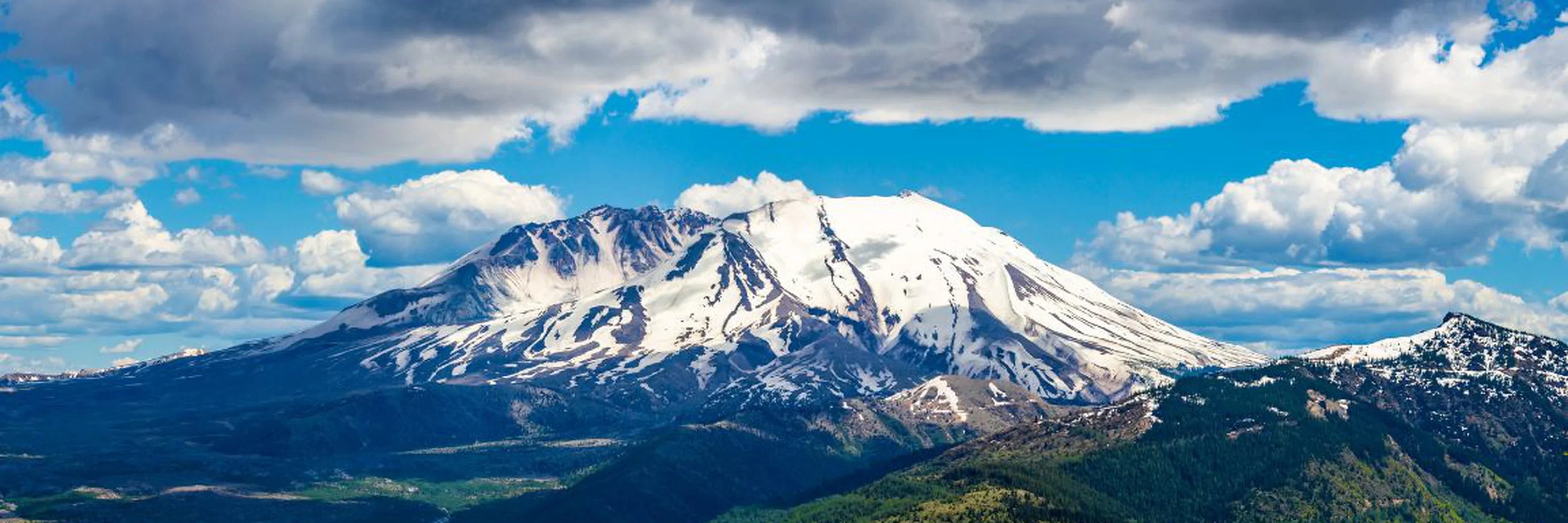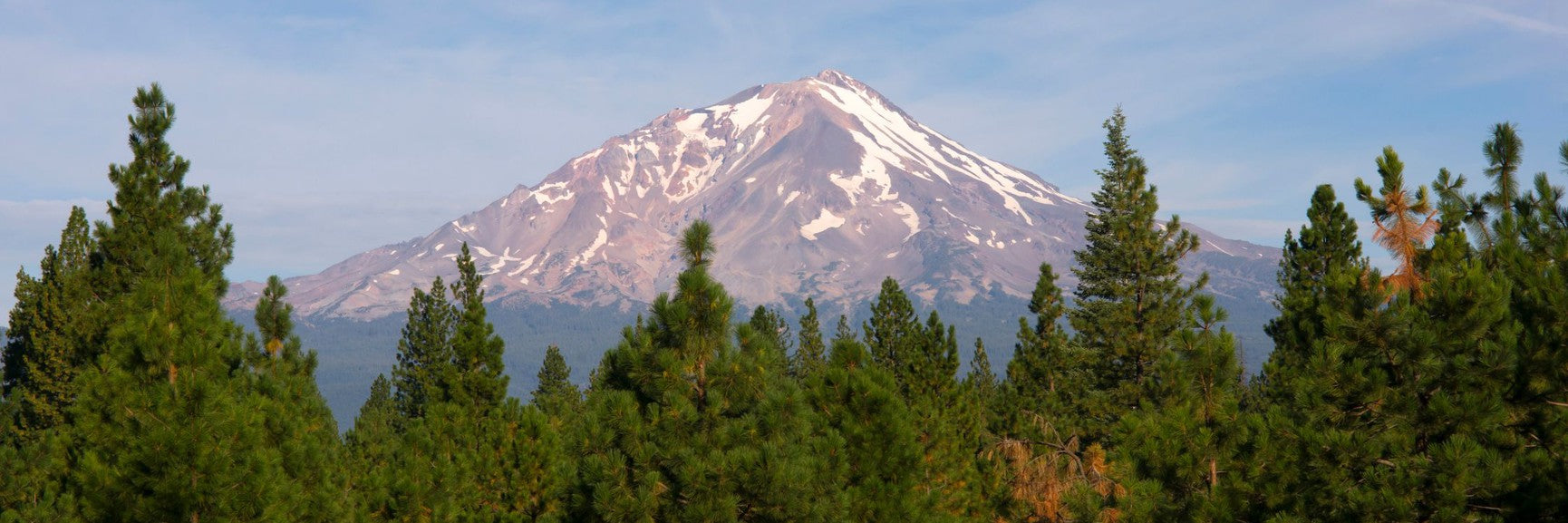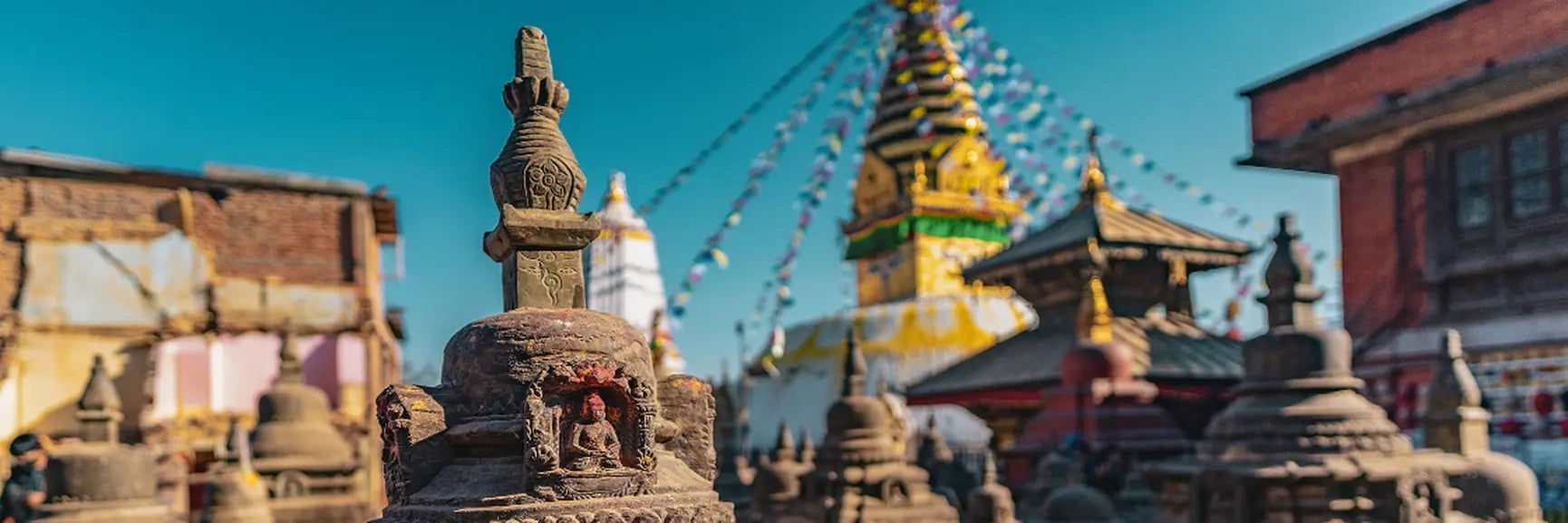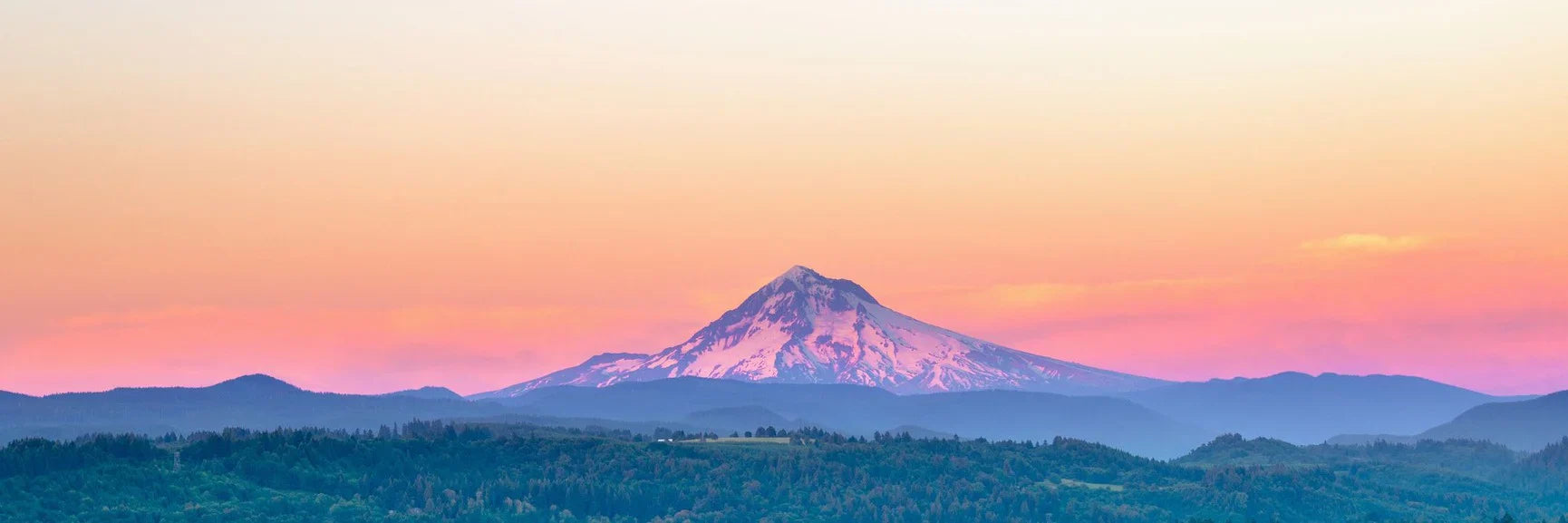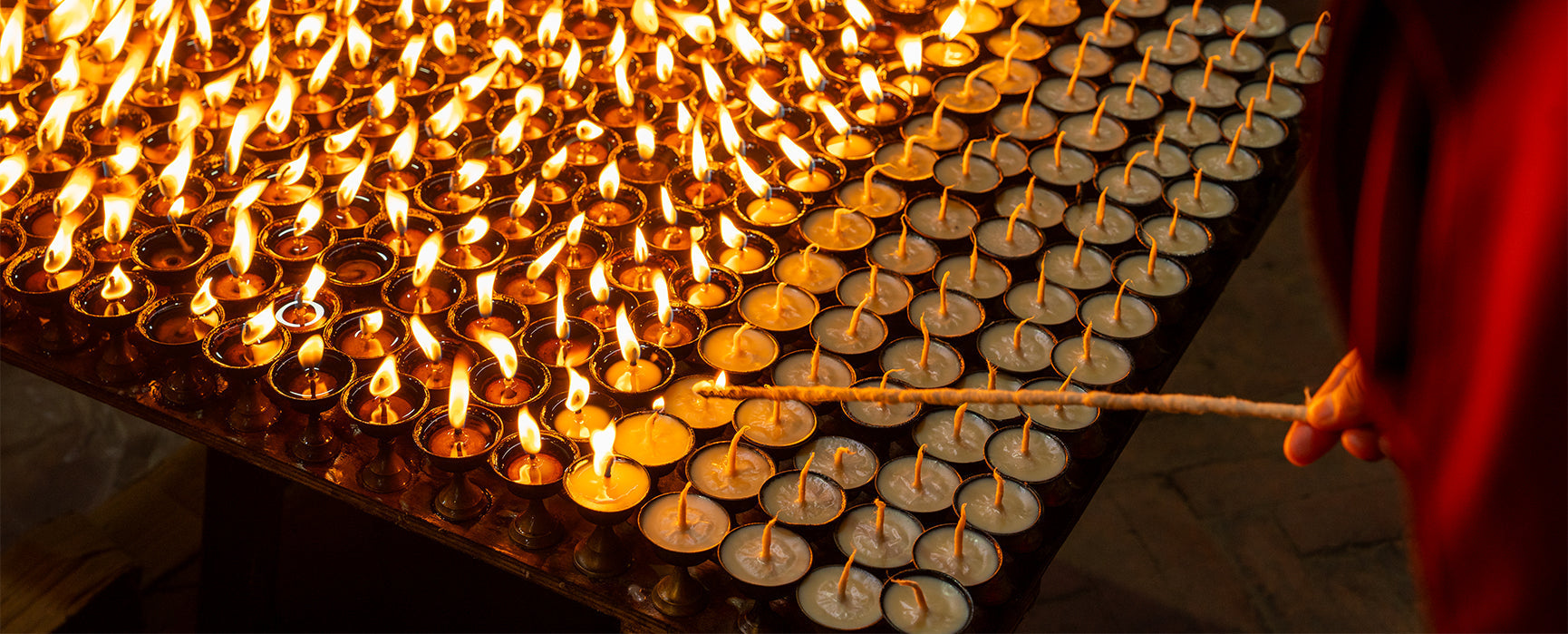The Cascade volcanic arc is a series of volcanoes that sit within the Cascade Range formed through the subduction of Earth's tectonic plates. This created a string of volcanoes spanning from North California up through Oregon and Washington and into Canada. This article outlines all that you need to know about this fiery land from its formations and features to its eruptions.
Introduction to The Cascade Volcanic Arc
The Cascade Volcanic Arc is a chain of volcanoes sitting along the Cascadia subduction zone running for over 700 miles from northern California through to British Columbia in Canada. It covers a distance of over 700 miles, featuring 20 major volcanoes and nearly 4,000 volcanic vents. Formed over 30 million years ago, the Cascade Arc features the second-highest volume of volcanic activity in the U.S – the first being Yellowstone National Park. Indeed, every volcanic eruption within the last two centuries in the contiguous U.S. has come from the Cascade Volcanic Arc.
The volcanoes of the Cascade Range are part of what's commonly known as the Pacific Ring of Fire. A region that circumferences the edge of the Pacific Ocean, so-called as it hosts 75% of the world's volcanic activity. The four largest volcanic eruptions of the current geological epoch occurred in the Pacific Ring of Fire, one of which being Mount Mazama, part of the Cascade Volcanic Arc in Oregon, approximately 7,700 years ago.
The most recent activity of the Cascade Volcanic Arc, occurred at Lassen Peak, California, between 1914 and 1917, and the major eruption of Mount St. Helens, Washington, in 1980. Due to the significance of the volcanic activity, and increasing population growth in the Pacific Northwest, several volcanoes, such as Mount Rainier, the highest peak in the Cascade Range, are under special observation and study. On average, a volcano will erupt in the Cascade Range once or twice per century with at least 7 volcanoes having erupted since the Declaration of Independence in 1776.
History of the Cascade Volcanic Arc
Volcanism in the Cascades has a 40-million-year history, starting when ancient volcanoes first pushed through ocean waters. Twenty million years later, continual eruptions created a layer of rock several kilometres thick to form the backbone of the Cascade Range. A study by the University of Oregon investigated 2,100 volcanoes to estimate that over the last 2.6 million years 2,730 cubic kilometres of matter have erupted. To put that into perspective, every mile of the Cascades produced enough material to cover all of Manhatten 92 feet deep every million years. These layers were then eroded around 10 million years ago to form the foundation of the Cascade volcanoes.
A mere two million years ago, eruptions began the construction of cinder cones. Mount Rainier's volcanic cone, for example, is around 500,000 years old. The most infamous Cascade volcano, Mount St. Helens, its cone only began forming 4,000 years ago. Whilst this may seem ancient, the Cascade Range is considered rather young. The Appalachian Mountains are 250 million years old in comparison.
How did the Cascade Volcanic Arc form?
Volcanoes form at tectonic plate boundaries. The theory of plate tectonics states that the Earth's outer crust, the lithosphere, is divided into plates that move over Earth's second layer, the asthenosphere, the partially melted upper portion of the mantle. Tectonic plates are in contact with each other, but they are always moving. It is this movement that causes a pathway for magma to rise to the Earth's surface.
A volcanic arc is a chain of volcanoes formed above a subducting plate boundary. Volcanoes in the Cascade arc are formed at the Cascadia subduction zone, where the Juan de Fuca, Gorda and Explorer oceanic plates meet and are then subducted i.e., forced beneath, the continental North America plate. When two plates move towards each other, this is known as a convergent plate boundary that produces intense volcanic activity and earthquakes.
When the oceanic plates of Juan de Fuca, Gorda and Explorer meet the continental North America plate, the oceanic plates are forced down into the mantle as they are denser than the continental plate in a process known as subduction. As the oceanic plates descend beneath the continental plate they are forced into higher temperature environments and at 160km down, they begin to melt. This melting produces chambers of magma which are less dense than the surrounding mantle materials and so it ascends.
If these magma chambers rise to the Earth's surface without solidifying, the magma will break through as a volcanic eruption. The constant eruptions over millions of years formed above the melting point of the Cascadia subduction zone, about 150km East of the Cascadia plate boundary itself, have formed what we now refer to as the Cascade Volcanic Arc. The 40-million-year eruption history has created a vast number of rare and interesting volcanic features that are discussed below…
Features of the Cascade Arc
The volcanoes within the Cascade Volcanic Arc may share general features and characteristics but they each have their geological peculiarities and traits. It is generally accepted that the most southerly active volcano in the arc is Lassen Peak in northern California whilst the northernmost volcano is the Mount Meager massif in British Columbia. The Cascade arc contains peaks such as the Mount Meager despite it being beyond the Fraser River, the commonly accepted end of the Cascade mountain range, as the Cascade Volcanic Arc is a geological term whereas the Cascade Range is a geographic term.
Twelve volcanoes in the Cascade Volcanic Arc rise above 3,000m with the two tallest, Mount Rainier and Mount Shasta, soaring clear of 4,300m. However, these aren't the largest volcanoes in terms of area. The shield volcanoes of Medicine Lake Volcano (600km3) and Newberry Volcano (450km3) take the crown of the largest volcanoes by volume. We uncover the most distinctive natural features of the Cascade arc below:
Stratovolcanoes
Stratovolcanoes are your classic cone-shaped volcanoes. They feature a steep profile and summit crater and are characterised by periodic explosive eruptions due to the high quantity and pressure of gas build-up. In the Cascade Volcanic Arc, stratovolcanoes feature the highest peaks. Mount Rainier is a stratovolcano, the highest peak in the whole of the Cascade Range. They are sometimes referred to as composite volcanoes as the conical shape is formed through the build-up of many layers i.e. strata, of hardened lava. The lava of stratovolcanoes is highly viscous, meaning it's quite sticky so it doesn't flow that far from where it erupts. As it solidifies and hardens close to where it erupts, layers can form acutely causing steep sides. Across the Cascade arc, there are 24 stratovolcanoes.
Shield Volcanoes
On the contrary to stratovolcanoes, a shield volcano has a low profile and gentle slopes – akin to a warrior's shield. In the Cascade arc, there are 21 shield volcanoes, the highest being Diamond Peak, Oregon, at 2,665m. However, it is the total area and volume of shield volcanoes that is most impressive. The lava of shield volcanoes has low viscosity, meaning it's very runny. This means it spreads far from the source of the volcano causing only gentle slopes. Active shield volcanoes tend to have near-constant eruptive activity over long periods but tend to be less explosive, with the steady accumulation of lava sheets building up the distinctive form.
Lava domes
A lava dome is a circular mound resulting from lava reaching the Earth's surface that is so viscous, that it cannot flow readily away and so accumulates around the vent. Mount Hood, located just 90-minutes from Portland, features the most well-known lava dome in the Cascade arc called Crater Rock. Newberry Volcano, the second largest shield volcano features one of the world's largest collections of lava domes.
Calderas
A caldera is a large depression formed when a volcano erupts and then collapses in on itself. When a volcano erupts, the magma held in the magma chamber is expelled and the support that magma provides the chamber is removed. Resultingly, the sides and top of a volcano collapse inward causing a creator. The eruption of Mount Mazama, of the Oregon Cascades, in 5750 BC was so great that most of Mount Mazama collapsed to form a caldera. Future eruptions later created a central platform, Wizard Island, a cinder cone formed by the accumulation of expelled rock fragments and ash creating a conical hill. Once the caldera cooled, rain and snow accumulated to form a lake – Crater Lake – known for its deep blue colour and clarity.
Tuyas
A tuya is a flat-topped but steep-sided volcano. It is a rare volcanic creation due to its formation as it required volcanic activity in areas simultaneously covered by glaciers. Tuyas are formed because of an eruption beneath a glacier which then cools the lava very quickly, meaning it doesn't travel far and piles up into a steep-sided hill. If the eruption persists it will melt all the surrounding ice, or build up above the glacier where the lava acts normally, creating a flat-cap look on top of the hill. Hayrick Butte is one of the most perfectly formed examples of a tuya in the world found in Linn County, Oregon. It's almost flat, triangular plateau is 0.8km wide with walls rising 210m above the plain below. Other examples of tuyas found in the Cascade Range are found in Oregon and also around Mount Garibaldi in British Columbia.
Top 10 Highest Volcanoes in the Cascade Volcanic Arc
- Mount Rainier (Washington) - 4,392 metres/14,411 feet
- Mount Shasta (California) - 4,317 metres/14,162 feet
- Mount Adams (Washington) - 3,742 metres/12,276 feet
- Mount Hood (Oregon) - 3,426 metres/11,239 feet
- Mount Baker (Washington) - 3,286 metres/10,781 feet
- Glacier Peak (Washington) - 3,206 metres/10,520 feet
- Mount Jefferson (Oregon) - 3,199 metres/10,497 feet
- Lassen Peak (California) - 3187 metres/10,457 feet
- Silverthrone Caldera (British Columbia, Canada) - 3,160 metres/10,370 feet
- South Sister (Three Sisters, Oregon) - 3,157 metres/10,358 feet
Eruptions in the Cascade Volcanic Arc
The Cascade Volcanic Arc is one of the world's 'busiest' areas of eruptive activity. Indeed 11 Cascade volcanoes have erupted at least once in the past 4,000 years. However, Cascade volcanoes can remain dormant for thousands of years between eruptions. The two most recent eruptions were Lassen Peak from 1914 to 1917 and the major eruption of Mount St. Helens in 1980.
Eruptions of Lassen Peak: 1914-1917
After 27,000 years of dormancy, Lassen became volcanically active again on May 30th 1914. On May 19th, a large eruption destroyed the dome of the volcano which fell on the upper flanks of the volcano causing a volcanic mudslide which extended for 65km and 0.8km in width, removing homes from their foundations and causing minor injuries to a few people, all of whom escaped.
On May 22 1915, a further eruption caused a cloud of ash and gas to rise more than 9km into the air, spreading 320km to the East. A pyroclastic flow swept down the volcano devastating a 7.8km2 range. This was the most significant eruption in a series of eruptions between 1915 and 1917.
Eruption of Mount St. Helens: 1980
On May 18th a magnitude 5.1 earthquake hit Mount St. Helens triggering the largest landslide in recorded history and an eruption that collapsed the whole of its north face. Magma erupted, and the ash plume soared to a height of 24km. The magma burst into a large pyroclastic flow and in less than 10 minutes, everything in a 230 square mile area was killed. The collapse of the north face mixed with snow, ice and water to create a lahar which destroyed bridges and lumber camps.
The eruption killed 57 people in total, including a volcanologist and photojournalist. Along with thousands of animals and billions of damage caused, it is the deadliest and most economically destructive event to have hit the United States. It is referred to as a Plinian eruption, meaning it is similar in scale to the Vesuvian eruption of 79 AD, which destroyed the ancient cities of Herculaneum and Pompeii.
Glossary of volcanic effects
- Ash: fine particles of pulverised rock erupted from a volcano vent
- Debris Avalanche: an avalanche of slurry consisting of rock, water and other material resulting from the collapse of an unstable side of a volcano
- Eruption: The arrival of fragmented material and/or lava to the surface of the earth
- Eruption Plume: A cloud of volcanic ash emitted from a volcanic vent
- Lahar: a mudlow composed of volcanic material
- Lava molten rock that has reached the Earth's surface that has been thrown out or flows effusively from a volcano
- Magma Molten rock beneath the surface of the earth
- Pyroclastic flow A fast moving cloud of exceptionally hot gas and volcanic matter that moves rapidly down the ground surface of a volcano at average speeds of 62mph
